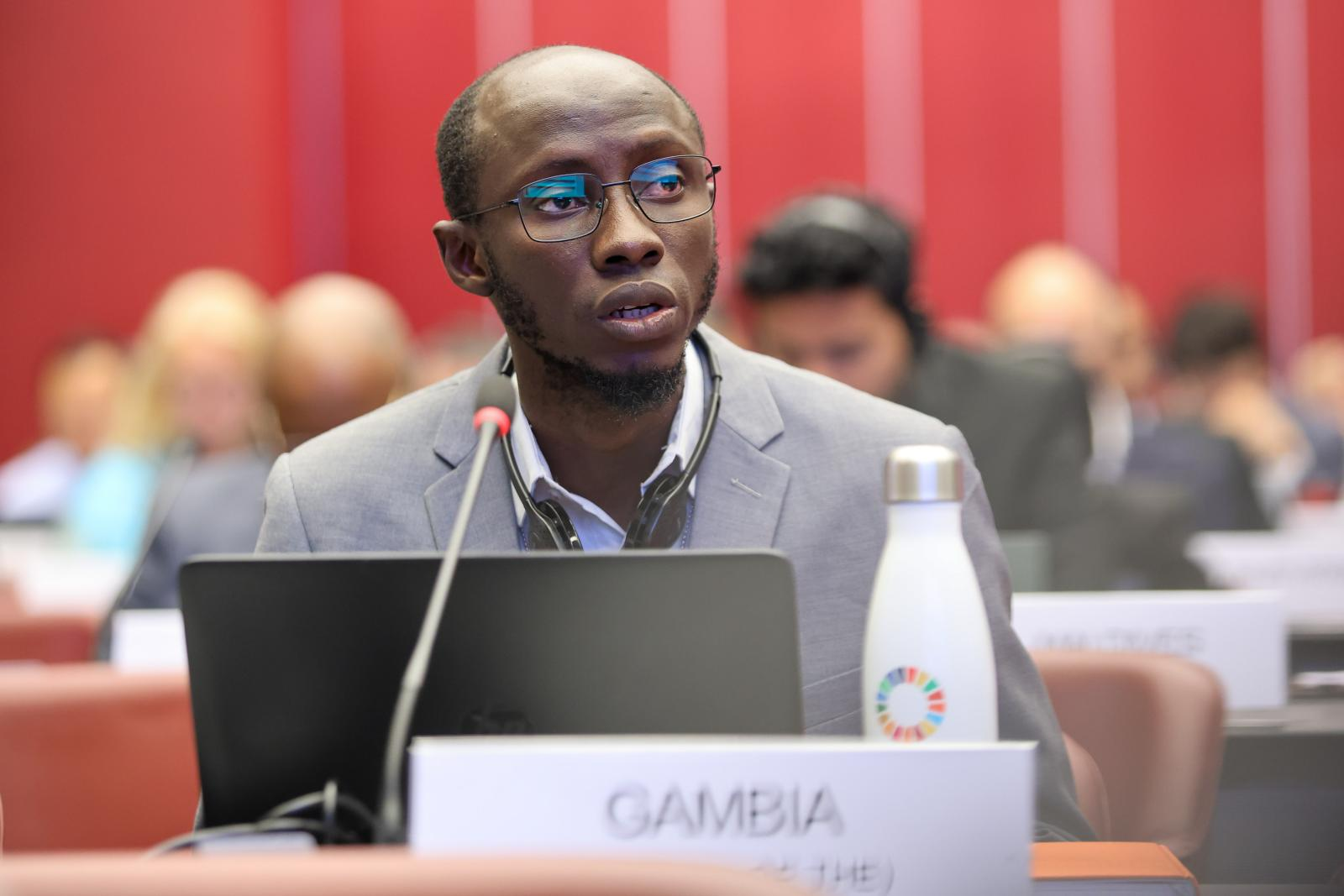This Q&A blog is based on the Global NIP Update Workshop on “Article 15 in Practice: National Reporting and ERS Guidance”, held on 2 October 2025 and organized by the Green Growth Knowledge Partnership (GGKP) under the GEF-funded and UNEP-led Global NIP Update Project (GEF ID 10785).
The session brought together national focal points, project coordinators, and technical experts to refresh knowledge on national reporting obligations under Article 15 of the Stockholm Convention and to explore the practical use of the Electronic Reporting System (ERS).
Two key speakers led the discussions: Ms. Lina Fortelius, Programme Management Officer at the Secretariat of the Basel, Rotterdam and Stockholm (BRS) Conventions, and Ms. Mihaela Claudia Paun, Programme Management Officer at UNEP’s Chemicals and Health Branch. Together, they unpacked what Article 15 requires, how the ERS works, and how the project Guidance (GGKP, 2024) can help Parties prepare for the next reporting cycle due 31 August 2026.
Q1. What is Article 15 of the Stockholm Convention, and why is national reporting important?
Article 15 of the Stockholm Convention establishes the legal obligation for every Party to periodically report to the Conference of the Parties (COP) on the measures taken to implement the Convention and on the effectiveness of those measures in meeting its objectives.
Each Party must provide the Secretariat with:
- Statistical data on its total quantities of production, import, and export of each chemical listed in Annexes A and B (or a reasonable estimate); and
- To the extent practicable, a list of the States from which it has imported or to which it has exported those substances.
- Such reporting is required at periodic intervals and, as decided in Decision SC-1/22, is submitted every four years. The next (sixth) cycle is due 31 August 2026 via the ERS.
As Ms. Fortelius explained, reporting is not only a compliance requirement but also a reflection of national progress. “For the report, you are collecting data about your country and how it is evolving — do it for yourselves first,” she emphasized. National reporting strengthens coordination among ministries and helps countries identify gaps in data, legislation, and institutional arrangements while contributing to global assessments of progress towards eliminating POPs.
Q2. What is the Electronic Reporting System (ERS), and how does it support Parties?
The ERS is an online platform developed by the BRS Secretariat to help Parties submit their national reports under Article 15. It is built on the same technology as the Basel Convention’s system and has been streamlined to make reporting more intuitive and efficient.
Each Party’s Official Contact Point (OCP) receives two user accounts to access the system. Only the OCP can formally submit the report, but other users can fill in all the responses to the form, and download and review Word or Excel versions offline to coordinate inputs across ministries. The ERS operates in six UN languages — Arabic, Chinese, English, French, Russian and Spanish — and features built-in validation tools that help check for missing information or inconsistencies.
Crucially, the ERS is pre-filled with data from previous reporting rounds, allowing countries to build on past submissions. Updated inventory data or revised emission factors can be used to correct earlier entries and improve accuracy. Parties can also use the comment fields to add explanations, references or links to national sources — a simple step that makes future reporting easier.
“It may look like a lot of work, but much of it has already been done,” Ms. Fortelius reassured participants. “Try to respond to all questions — even partial answers help. Any piece of information can be crucial to understanding how your country is implementing the Convention.”
Q3. When is the next reporting cycle, and what should Parties prepare for?
Under Decision SC-1/22, national reports are required every four years, with the deadline for the sixth reporting cycle set by 31 August 2026. The Secretariat updates the questionnaire each time the COP adds a new chemical to Annexes A, B, or C to ensure Parties report on the most recent obligations. Some substances, such as DDT, also have individual questionnaires and shorter reporting intervals (every two-three years).
Ms. Fortelius encouraged Parties to begin data collection early and to leverage ongoing NIP update processes to reduce duplication of effort. Early coordination among national focal points, technical agencies, and ministries ensures a smoother review and quality control process before final submission through the ERS.
Q4. How does Article 15 reporting relate to National Implementation Plans (NIPs)?
Articles 7 and 15 of the Stockholm Convention are deeply connected. Most of the data needed for reporting — on POPs inventories, regulatory updates, and monitoring programmes — is already generated through the NIP process.
“Approximately 90 percent of the data needed for Article 15 reporting can be derived directly from the NIP update, in the ideal case, the Stockholm Convention Secretariat’s guidance documents are fully followed, and assuming the required data is available,” explained Ms. Paun.
The NIP provides a foundation for quantitative and qualitative information alike, but reporting often helps reveal missing elements — from inventory gaps to incomplete legislation or data-sharing arrangements. Identifying these gaps through reporting allows countries to feed them back into future NIP updates. Thus, reporting and NIP development form a continuous cycle of learning and improvement that strengthens national chemicals governance.
Q5. What does the project Guidance offer to Parties preparing their reports?
The project Guidance on Supporting the Process of Data Collection, National Reporting and Modality for Final Quality Check serves as a key reference tool for Parties organizing and validating data. It provides a step-by-step approach for coordinating data collection, aligning datasets, and conducting quality checks before submission to the Secretariat.
Its annexes offer practical resources:
- Annex I lists common source categories of POPs, mercury, and greenhouse gas emissions to highlight data overlaps.
- Annex II presents comparisons between qualitative and quantitative information in NIPs and Article 15 reports, and outlines overlaps with other international reporting obligations.
“The Guidance is not intended to replace national procedures but to support them. The same applies to the relevant Stockholm Convention Secretariat’s guidance documents, which this Guidance aligns to and integrates information coherently,” noted Ms. Paun. “It offers a harmonized framework that helps countries translate the data they already gathered during the NIP development and/or update process into the format required for Article 15 reporting.” By using this resource, countries can streamline their reporting workflow and enhance data consistency across POPs obligations — including those on PCBs, PFOS, DDT, and unintentional POPs (uPOPs).
Q6. What types of data and information should be included in Article 15 reports?
Parties are expected to submit both quantitative and qualitative data covering the entire lifecycle of POPs. This may include: updated inventories for pesticides and industrial POPs, unintentional POPs release estimates, information on legislation, monitoring data, and capacity-building activities.
Quantitative information should cover production, use, import and export of Annex A and B chemicals (start and end years, sources, and destinations); source inventories for Annex C chemicals (PCDD/PCDF, PCBs, HCB, PeCB, PCN, HCBD); data on PCB equipment and waste; and figures on PFOS production, waste destruction, and transboundary movements.
Sources of information can include NIPs, national statistics, annual ministerial reports, industry surveys, research studies, and expert interviews. Even incomplete information is valuable. As Ms. Fortelius reminded participants, “Try to respond to every question — even partial answers contribute to understanding the Convention’s implementation globally.”
Q7. How can Parties use the ERS Dashboard and other tools?
The Reports Dashboard for the Stockholm Convention mirrors the ERS structure and allows users to visualize submitted data across reporting cycles. Parties can filter by region, question, or specific chemical and download customized Excel datasets. The Dashboard supports benchmarking and peer learning, enabling Parties to compare approaches and monitor progress over time.
This open-access platform enhances transparency and feeds directly into the Convention’s effectiveness evaluation process, helping Parties and the international community assess how well measures are working to reduce and eliminate POPs.
Q8. Where can Parties find additional support and resources?
Parties can access:
- The ERS and Article 15 reporting manuals on the BRS Secretariat website;
- GGKP`s 2024 Guidance on Supporting the Process of Data Collection, National Reporting and Modality for Final Quality Check on the Green Growth Knowledge Platform; and
- NIP Community of Practice on Green Forum, where they can exchange experiences, access recordings and materials from this workshop, and continue peer learning


